What I learned from Rothko about being an artist.
TLDR: Stop worrying so much about being an artist with a niche.
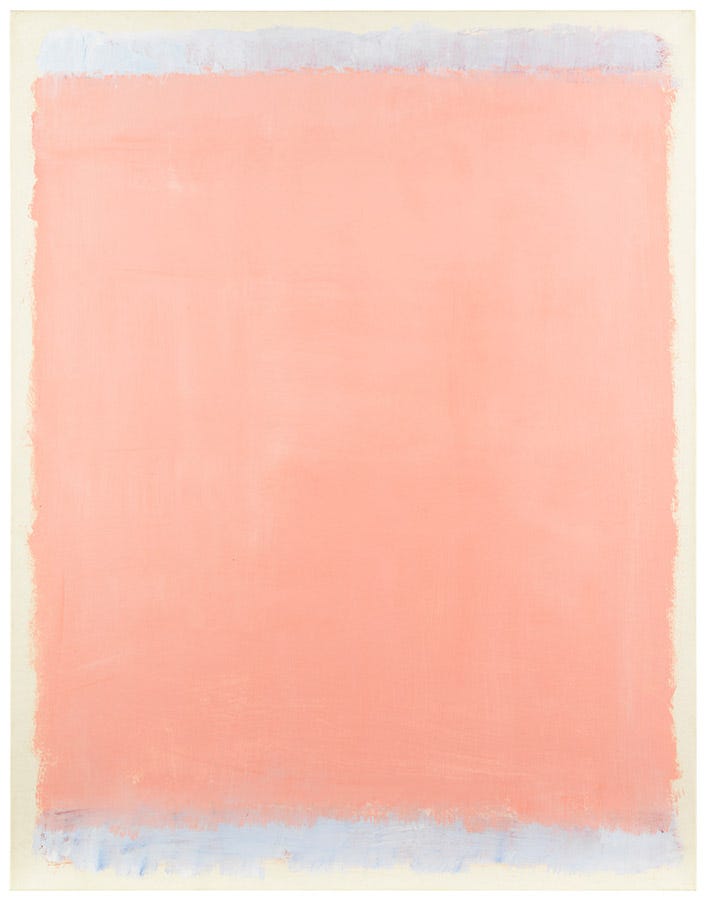
This past weekend I braved the torrential rain in DC (and the cherry blossom crowds) to see the Rothko exhibition at the East Wing of the National Gallery of Art. A quick something about me - I will either see a show on the first day or the last day, and there is typically no in-between. My mom and I caught “Mark Rothko: Paintings on Paper” a few days shy closing (March 31st), and if you’re in the DC, I cannot recommend this show enough. Make it happen this week!
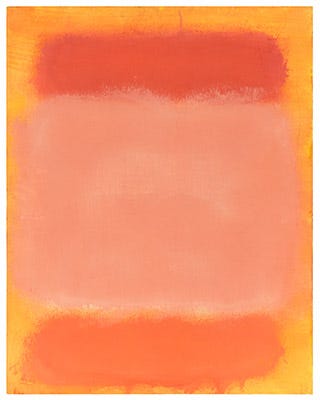
The exhibition includes over 100 of Rothko’s works on paper (most of which he mounted on canvases) and follows his life chronologically right up to his death in 1970. And I’ll tell you - I love a chronological show. It’s not a groundbreaking concept, but the way you can start to fully understand an artists career is stunning. The organization of the show hugely contributed to my take-aways and how I cannot get it out of my brain.
The first room of watercolors are shocking mimicries of Cezanne and Picasso’s landscapes and portraits. While not fully figurative, they are expressive, colorful, and explore the same relationship between space and objects. I love seeing these early works and how they show subtle interest in themes that will take center stage later in his career.
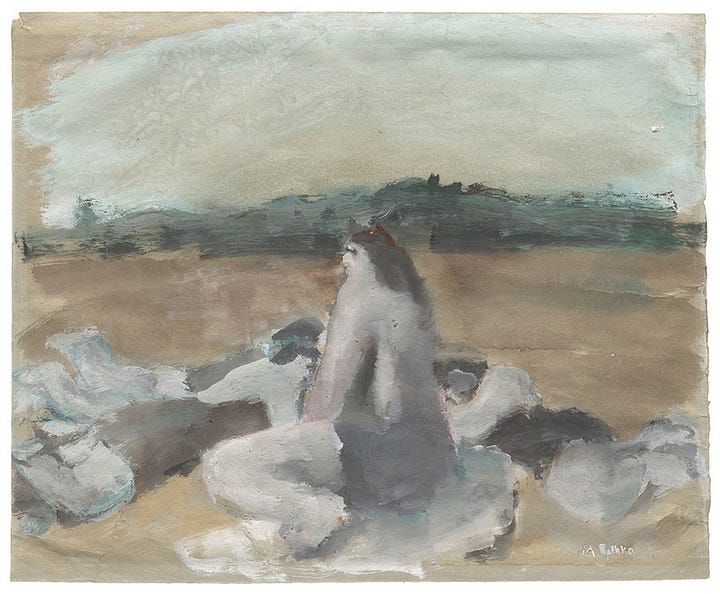
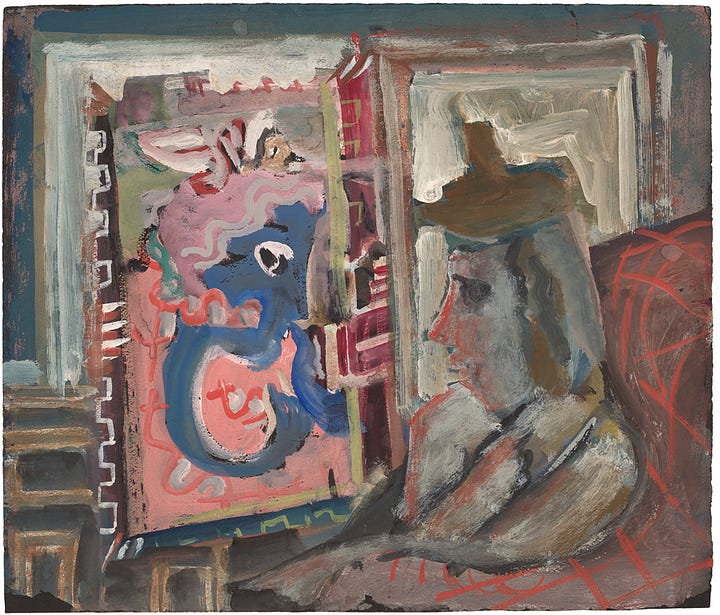
The next section of works resemble Joan Miro to me - surrealist, primitive life forms on a washes of neutral colors (strata of the earth?) - except for a few strong lines of hot red, yellow or orange. When Rothko created this body of work he was in his 40s. He was not an emerging artist “finding his style”, but rather one that had been practicing for decades. These works were also collected by top art institutions internationally, including by Peggy Guggenheim for her Venice museum. So again - not the picture of an artist struggling to define his practice!
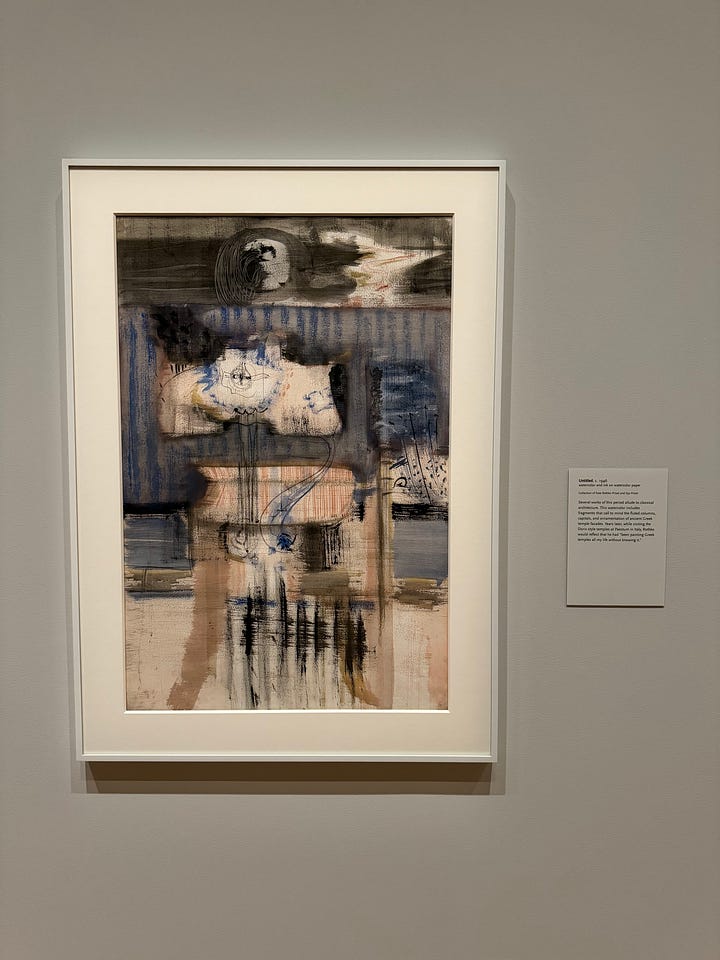
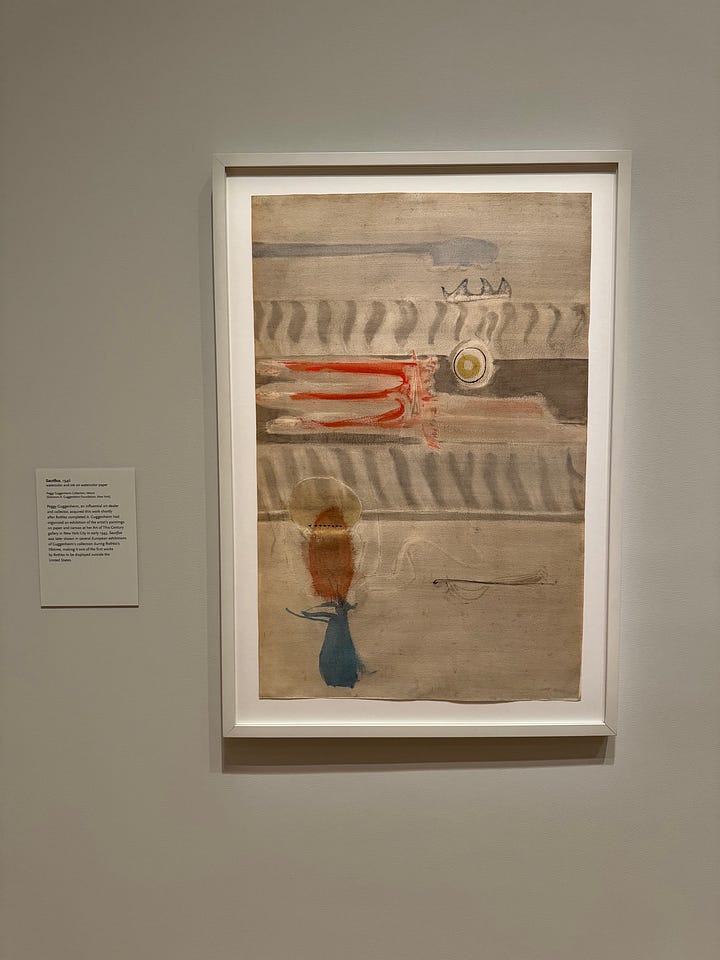
And yet, these works look nothing like what we picture when thinking of Rothko’s work. Even in his 40s with years of painting under his belt, he was still refining, exploring, and completely disrupting his process.
The works that follow in the exhibition are the blocks of color fields we know and love. Yet, in states of despair he painted black holes of slightly nuanced colors or grey scale works that look like the surface of the moon (right) (the moon landing happened at the same time as these paintings - 1969). And the year before his death, his work could not have been more oppositely serene (left).
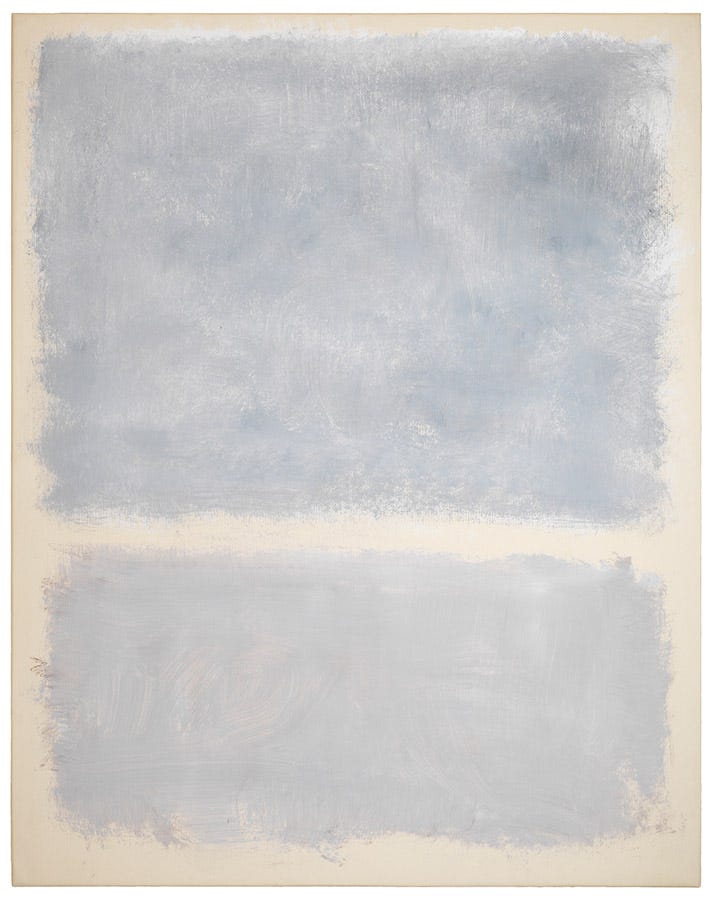
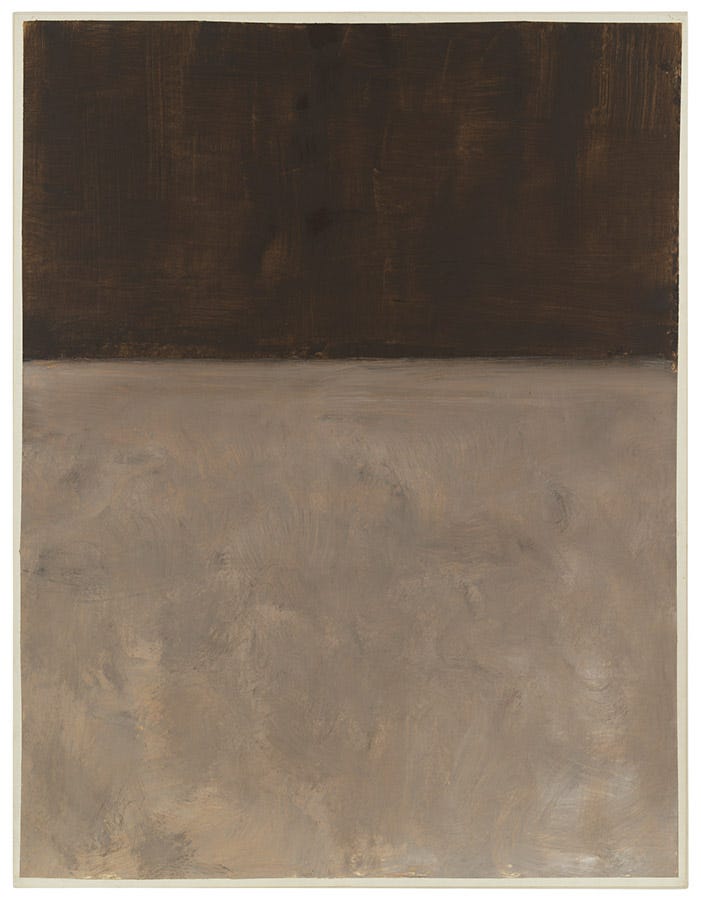
So here it is - I cannot stop thinking about the life and practice that Rothko lived and how it’s a huge encouragement to artists.
I often am asked if an artist should try to hone their artistic style, and quit doing so many different kinds of work in order to carve out a very specific aesthetic niche.
My answer is always the same. If that is truly how you work and how your practice functions and how your creative brain thrives - by all means! Embrace that love of a subject or color palette or medium!
But otherwise - why kill the very creative force in you that drives why you do what you do? Why limit your practice? Why let public perception of your work change it so fundamentally? If you want to sustain your practice, keep doing the art that drives you. It sounds cliche, but stay curious! Stay open. Keep doing what you love, even if one day you’re working with gold leaf and the next you’re doing ceramic florals. Especially if!
By tirelessly pursing what interested him and by honing in on what ultimately felt like his tumultuous emotions represented on paper/canvas, Rothko was never hindered by his changing aesthetic style. I would argue that it powered his practice, enabling him to find a language that he carried into the rest of his days.



Encouraging words and advice for artists. Thanks so much, C